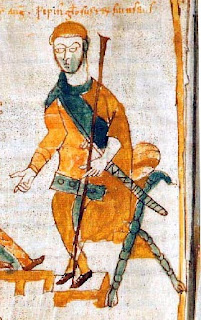That church was destroyed in a fire in 741. Bishop Egbert started the rebuilding, resulting in what Alcuin in his letters described as:
very tall, and held by solid columns which support curved arches; beautiful panels and numerous windows make it shine with brilliance. Its magnificence is increased by its gantries, terraces and thirty altars, decorated with a rare variety.
It was damaged by William the Conqueror in 1069, but then his Norman Archbishop Thomas of Bayeaux in 1070 started rebuilding. It was damaged again in 1075 by Danes, but in 1080 the repairs started. This new large (364 feet long) building was damaged by fire in 1137. The pattern of damage (by fire or attack) and repair has continued, right up to a fire in 1984 when 110 firefighters deliberately dumped enough water on the south transept to crash the roof completely, smothering the blaze and preserving the rest of the minster. Despite these events, York still has some of the oldest stained glass in England.
In 1215, a Gothic church was started, to replace the Norman architecture. Archbishop Walter de Gray also wanted its magnificence to rival Canterbury, since the Archbishops of York resented that the Archbishops of Canterbury were considered to have authority over all England's churches.
The term "minster" is from the Anglo-Saxon period, and denotes a church for teaching missionaries. That is no longer the purpose of York, but the honorific has stuck.
Despite the stone construction of many churches, they could still contain flammable material: carvings, roof beams, furniture, tapestries, etc. Churches in the Middle Ages could also contain flammable material that we never see or think of these days. Tomorrow I want to talk about the medieval event called "rushbearing."






























